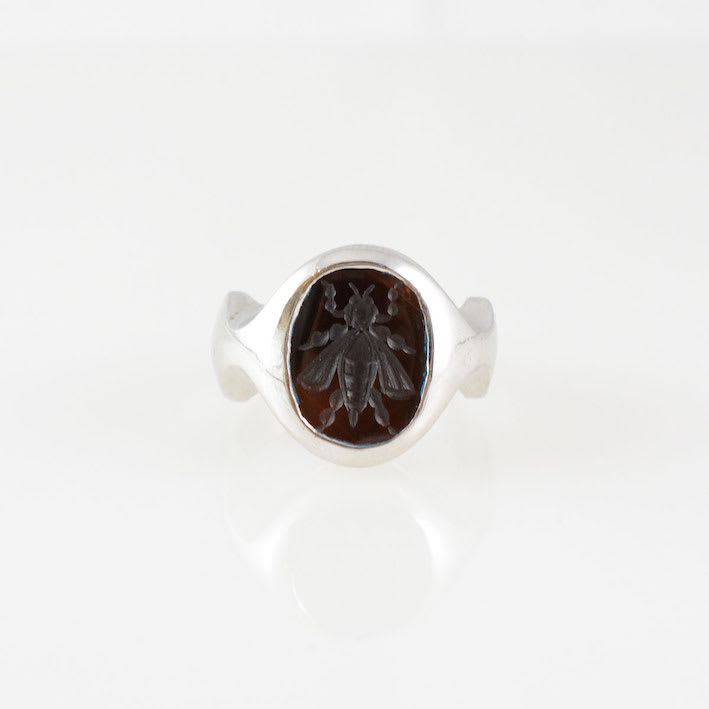Classical Revival Carnelian Intaglio of a Bee, 18th Century CE - 19th Century CE
Carnelian-Gold
FJ.6839
Further images
This Gorgeous Intaglio Has Been Set in a Modern 18 Karat White Gold Rin The art of glyptics, or carving on colored precious stones, is probably one of the oldest...
This Gorgeous Intaglio Has Been Set in a Modern 18 Karat White Gold Rin The art of glyptics, or carving on colored precious stones, is probably one of the oldest known to humanity. Intaglios, gems with an incised design, were made as early as the fourth and third millennia B.C. in Mesopotamia and the Aegean Islands. They exhibit a virtuosity of execution that suggests an old and stable tradition rooted in the earliest centuries. The tools required for carving gems were simple: a wheel with a belt-drive and a set of drills. A special difficulty of engraving intaglios, aside from their miniature size, was that the master had to work with a mirror-image in mind. The Classical Revival was a phenomenon that swept through Europe in the 18th and 19th Centuries. A new appreciation for antiquity and ancient art forms was fostered by discoveries in the nascent scientific field of archaeology. Perhaps the Classical Revival also reveals a latent longing towards the Arcadian lifestyles of yesterday abandoned as Europe became rapidly industrialized and increasingly urbanized. Engraved upon the polished surface of this precious gemstone is a depiction of a bee. This remarkable little creature is both a source of tremendous respect and fear. Despite their small size, they carry a painful sting that is the nightmare of many children. In some cases, their stings can produce fatal allergic reactions. At the same time these fascinating creatures manufacture the sweet sticky nectar called honey. Mankind has long marveled at the social organization of the beehive where thousands of workers tirelessly serve and protect one queen. Created during the Classical Revival, perhaps this intaglio reflects a longing towards the more stable days of monarchies during these revolutionary times.





